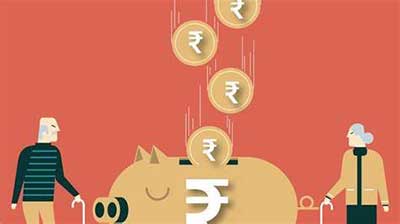Date: 10/03/2023
Relevance: GS-3: Indian Economy and issues relating to planning, mobilization, of resources, growth, development and employment.
Key Phrases: EPFO, paragraph 11 (4) of the EPS Rules, individual PF accounts, EPFO versus Sunil Kumar B case, EPS Rules.
Context:
- The Employees' Provident Fund Organisation (EPFO) has allowed its subscribers who retired after September 1, 2014, or were in service before the date and continue to be in service, to apply for higher pension under the Employees' Pension Scheme (EPS) of 1995.
Key Highlights:
- The prospective beneficiaries fall under two categories — those who retired after September 1, 2014, and those who were in service prior to the date and continue to be in service.
- The critical element is that in either of the cases, employers must have made PF contributions in excess of the mandatory ceiling of the pensionable salary.
Why is the EPFO doing this?
- The present exercise of the EPFO has been necessitated by the judgment of the Supreme Court given on November 4, 2022 in the EPFO versus Sunil Kumar B case.
- The verdict, apart from upholding the 2014 amendment brought in by the Union government, had given an opportunity to all employees, as on September 1, 2014, who did not exercise the option under paragraph 11 (4) of the EPS Rules for higher pension but were entitled to do so but could not due to the interpretation on cut-off date by the authorities.
- It clearly stated that the time to exercise the option “shall stand extended by a further period of four months.”
- The 2014 amendment, which came into effect in September that year, raised the pensionable salary cap to ₹15,000 a month from ₹6,500 a month, and allowed employers to contribute 8.33% of the employees’ actual pay (even if it exceeds the cap) towards EPS.
- Between November 16, 1995 (the date of commencement of the Pension Scheme) and May 31, 2001, the salary cap was ₹5,000.
- Even though employers, in many instances, had been making PF contributions over and above the ceiling for their employees, only 8.33% of the pensionable salary cap had got transferred to the Pension Fund.
- Another important feature of the amendment is that unlike in the past when new employees covered under the Provident Fund (PF) compulsorily became members of the EPS, only those with the monthly wage of not exceeding ₹15,000 can now be members of the Pension Scheme.
- This was in line with the Court’s stipulation in the Sunil Kumar case that the directions of the Court’s judgment given in 2016 in the R.C.
- Those who retired before September 1, 2014 without exercising the option under paragraph 11(3) of the EPS Rules would not be eligible to apply for higher pension, as this was what the Court had laid down in its latest verdict.
How will the pension be calculated?
- The pensionable salary, which represents the average of the last 60 months of salary, will have to be multiplied by the number of contributory years, the sum of which is to be divided by 70, which indicates the average longevity for an Indian.
- For the purpose of pension, an employee, on attaining the age of 58 years, is deemed to have retired from service and consequently, exited the Pension Scheme, regardless of the retirement policy of the employer.
- According to the EPFO’s annual report for 2021-22, as on March 31, 2022,
there were about 27.95 crore members of the Pension Fund, of whom
pensioners were around 72.74 lakhs.
Financial Impacts - In the event of the authorities clearing the applications for higher pension, the pensioners and the subscriber will have to remit to them the amount that represents the difference between the portion of PF contributions transferred earlier to the Pension Fund and what would have to be paid based on actual salary.
- In the case of the subscribers, a certain portion of the amount lying with their individual PF accounts may even get transferred to the Pension Fund, after their applications for higher pension get approved.
- As all the pensioners would have received their terminal benefits, they will be required to make their payments separately.
- In any case, the payment will include interest too, the rate of which will be indicated by the authorities later.
- Going by what is available on the portal, the entire payment will have to be made in a single tranche.
- Employers will be required to bear the administrative charges, which are expected to be nominal.
- There will be no impact on the net salary. If the application for higher pension gets approved, the change will be in respect of the transfer of the employer’s contribution towards the PF account of the employee.
- Only 3.67 percentage point of the employer’s 12% contributions on the actual pay of the employee will go to the PF account and the remaining 8.33%-age point to the Pension Fund.
Way Forward:
- Higher pensions may provide a sense of economic security after retirement. But the amount that a pensioner gets during his/her lifetime will get halved on his/her death and paid to the spouse.
- However, the amount that is lying with an employee’s PF account will be paid totally to the employee’s spouse in the event of his/her death during service.
Conclusion:
- While there may be a financial impact, the move is likely to provide some relief to subscribers who are eligible for higher pension under the EPS.
Source: The Hindu
Mains Question:
Q. "Explain the Higher Pension Scheme introduced by the Employees’ Provident Fund Organisation (EPFO) and its impact on pensioners and subscribers." Analyze the role played by the Supreme Court's verdict and the 2014 amendment in this regard. (250 Words).







